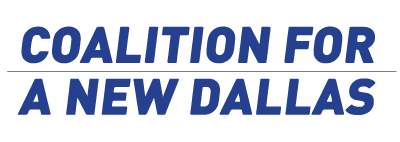REINVEST
1
The City of Dallas has a net estimated debt burden of $7.8 billion on total revenues of $3.6 billion. This is unsustainable in the long term. In the short term, it forces a reduction in services, reduced police coverage, poor maintenance of streets and facilities, and an inability to tackle major problems with radical corrective action. The city is caught in a trap. The less maintenance it can afford, the more its infrastructure deteriorates. At the neighborhood level, this means potholes, broken sidewalks, and poor flood control. Meanwhile, even in North Dallas apartments built 40 years ago deteriorate into scenes of crime and vandalism. Strip shopping centers age and lose retail business. The surrounding neighborhoods become less attractive to young families.
2
To reverse this trend and set Dallas on a prudent financial course, the city needs to sell non-performing assets and use the proceeds to (a) reduce debt, thereby freeing debt service monies to perform basic maintenance, and (b) reinvest to maximize return, both in growth of the tax base and in improving its quality of life (which, in turn, leads to growth of the tax base). The city’s two biggest non-performing assets are its share of DFW Airport and Love Field, which, although very successful, under federal law, cannot return to the city an appropriate return on its investment. By selling or leasing airport operations, the city could net approximately $7 billion. That's one source – the most obvious -- for debt reduction and investment. The biggest opportunity the city faces is the development of east end of downtown, where I-345 now sits. Teardown costs are estimated at less than $500 million. Restoration of the city grid, with two major boulevards and rapid bus transit, is estimated at $800 million, with a resulting value of $4.5 billion. Reduction of interest payments and development of the east end would produce $200 million or more annually to the city for needed repairs, upkeep, and adding police personnel. In municipal finance terms, that is the equivalent of $2 billion in bond indebtedness.
3
The status quo is neither tenable nor acceptable. One financial analyst has described the city finances as a "sinkhole." In addition, Dallas remains the most segregated in the United States. It was designed that way, and as a result, 55 percent of our land produces only 15 percent of our revenue. The only way to change that is – to change it. To stop frittering around the edges. To stop the slow decline of city services. To stop one-off, well intentioned projects that have little to no effect on the total picture. Instead, the city must embrace and enact major actions to correct the mistakes of the past and take advantage of the new movement to urban living. The Coalition for a New Dallas is true to its name. We believe Dallas can become a new city – vibrant, walkable, full of energy, and financially capable to delivering first-class service to all of its residents.



